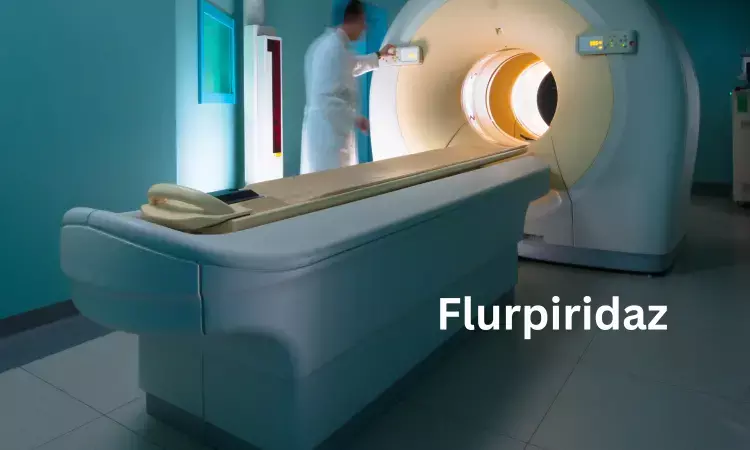- Home
- Medical news & Guidelines
- Anesthesiology
- Cardiology and CTVS
- Critical Care
- Dentistry
- Dermatology
- Diabetes and Endocrinology
- ENT
- Gastroenterology
- Medicine
- Nephrology
- Neurology
- Obstretics-Gynaecology
- Oncology
- Ophthalmology
- Orthopaedics
- Pediatrics-Neonatology
- Psychiatry
- Pulmonology
- Radiology
- Surgery
- Urology
- Laboratory Medicine
- Diet
- Nursing
- Paramedical
- Physiotherapy
- Health news
- Fact Check
- Bone Health Fact Check
- Brain Health Fact Check
- Cancer Related Fact Check
- Child Care Fact Check
- Dental and oral health fact check
- Diabetes and metabolic health fact check
- Diet and Nutrition Fact Check
- Eye and ENT Care Fact Check
- Fitness fact check
- Gut health fact check
- Heart health fact check
- Kidney health fact check
- Medical education fact check
- Men's health fact check
- Respiratory fact check
- Skin and hair care fact check
- Vaccine and Immunization fact check
- Women's health fact check
- AYUSH
- State News
- Andaman and Nicobar Islands
- Andhra Pradesh
- Arunachal Pradesh
- Assam
- Bihar
- Chandigarh
- Chattisgarh
- Dadra and Nagar Haveli
- Daman and Diu
- Delhi
- Goa
- Gujarat
- Haryana
- Himachal Pradesh
- Jammu & Kashmir
- Jharkhand
- Karnataka
- Kerala
- Ladakh
- Lakshadweep
- Madhya Pradesh
- Maharashtra
- Manipur
- Meghalaya
- Mizoram
- Nagaland
- Odisha
- Puducherry
- Punjab
- Rajasthan
- Sikkim
- Tamil Nadu
- Telangana
- Tripura
- Uttar Pradesh
- Uttrakhand
- West Bengal
- Medical Education
- Industry
Flurpiridaz- new tracer for PET myocardial perfusion imaging facilitates CAD detection in obese women

Novel tracer for PET myocardial perfusion imaging flurpiridaz improves CAD detection
For decades, Myocardial perfusion imaging (MPI) with single photon emission computed tomography (SPECT) has been the main method for assessing patients with known or suspected coronary artery disease (CAD). However, recently positron emission tomography (PET) MPI is increasingly favored when it is available. In contrary currently available PET perfusion tracers have limitations that have hampered broad utilization.
A recent trial published in Journal of American College of Cardiology reports Flurpiridaz F-18 (flurpiridaz) is a novel positron emission tomography (PET) myocardial perfusion imaging tracer. The trial in second phase suggests flurpiridaz has efficient utility as a new tracer for CAD detection, specifically in women and obese patients.
The current study is a continuation study to further assess the diagnostic efficacy and safety of flurpiridaz for the detection and evaluation of coronary artery disease (CAD) defined as ≥50% stenosis by quantitative invasive coronary angiography (ICA). In this second phase 3 prospective multicenter clinical study, 730 patients with suspected CAD from 48 clinical sites in the United States, Canada, and Europe were enrolled. Patients underwent 1-day rest/stress flurpiridaz PET and 1- or 2-day rest-stress Tc-99m–labeled single photon emission computed tomography (SPECT) before ICA. PET and SPECT images were read by 3 experts blinded to clinical and ICA data.
The key findings of the study are
• A total of 578 patients (age 63.7 ± 9.5 years) were evaluable; 32.5% were women, 52.3% had body mass index ≥30 kg/m2, and 33.6% had diabetes.
• Flurpiridaz PET met the efficacy endpoints of the study; its sensitivity and specificity were significantly higher than the prespecified threshold value by 2 of the 3 readers.
• The sensitivity of flurpiridaz PET was higher than SPECT (80.3% vs 68.7%; P = 0.0003) and its specificity was noninferior to SPECT (63.8% vs 61.7%; P = 0.0004).
• PET area under the receiver-operating characteristic curves were higher than SPECT in the overall population (0.80 vs 0.68; P < 0.001), women, and obese patients (P < 0.001 for both).
• Flurpiridaz PET was superior to SPECT (P < 0.001) for perfusion defect size/severity evaluation, image quality, diagnostic certainty, and radiation exposure. Flurpiridaz PET was safe and well tolerated.
Researchers concluded that “This second flurpiridaz PET myocardial perfusion imaging trial shows that flurpiridaz has utility as a new tracer for CAD detection, specifically in women and obese patients.”
Reference: Maddahi J, Agostini D, Bateman T, et al. Flurpiridaz F-18 PET Myocardial Perfusion Imaging in Patients With Suspected Coronary Artery Disease. J Am Coll Cardiol. 2023 Oct, 82 (16) 1598–1610.https://doi.org/10.1016/j.jacc.2023.08.016.
MSc. Neuroscience
Niveditha Subramani a MSc. Neuroscience (Faculty of Medicine) graduate from University of Madras, Chennai. Ambitious in Neuro research having worked in motor diseases and neuron apoptosis is interested in more of new upcoming research and their advancement in field of medicine. She has an engrossed skill towards writing and her roles at Medical dialogue include Sr. Content writer. Her news covers new discoveries and updates in field of medicine. She can be reached at editorial@medicaldialogues.in
Dr Kamal Kant Kohli-MBBS, DTCD- a chest specialist with more than 30 years of practice and a flair for writing clinical articles, Dr Kamal Kant Kohli joined Medical Dialogues as a Chief Editor of Medical News. Besides writing articles, as an editor, he proofreads and verifies all the medical content published on Medical Dialogues including those coming from journals, studies,medical conferences,guidelines etc. Email: drkohli@medicaldialogues.in. Contact no. 011-43720751


